Antwerp (Belgium) – the most detailed information about the city with a photo. The main attractions of Antwerp with a description, guides and maps.
Contents
City Antwerp (Belgium)
Antwerp is a city in the northeast of Belgium one of largest ports in the world (second in Europe after Rotterdam). it at the same time noisy industrial port city and outstanding The historical center of the Belgian craft and art. Centuries Prosperity left Antwerp a magnificent legacy architectural ensemble, which includes a stunning cathedral, Town Hall, many other sacred monuments and simply beautiful old buildings.
In the 16th century, Antwerp was one of the largest and richest cities Europe. He was visited by traders from almost all over the world. Also numerous artists, sculptors and others settled here creative individuals. Thanks to its long and rich cultural The history of this city has many interesting buildings of different historical periods, as well as a huge number of magnificent museums. Recently, Antwerp has become a fashionable place that attracts numerous bohemians and young people. This is a city with many people which offers the perfect combination of history and modern dynamic life.
- Geography and climate
- Practical information
- Story
- How to get there
- sights
- Video
- Maps and guides
- Comments and reviews
Geography and climate
Antwerp is located in the northeastern part of Belgium in historic area of flanders. The city lies on the banks of the Scheldt, not far from where the river flows into the North Sea. Antwerp has a temperate maritime climate, similar to that of southern England. The summer is cool and rainy, and the winter is relatively mild with small negative temperatures.
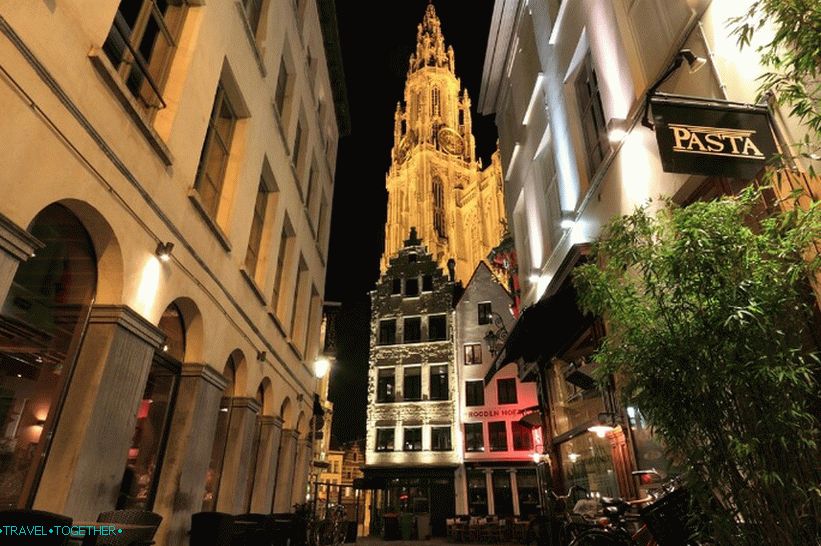 Night Antwerp
Night Antwerp
Practical information
- The population is 523 thousand people. Antwerp is the largest the city of Flanders and the second most populous in all Belgium
- The area is 204.51 km².
- The language is Dutch.
- Currency – Euro.
- Visa – Schengen.
- Time – Central European (UTC +1, summer +2).
- The main shopping area is Meir, which extends from Keyserlei (near central station) to Groenplaats. Between Meir and Hopland is a shopping center – Stadsfeestzaal. Brand stores are concentrated around Hopland and Schuttershofstraat.
- Antwerp is one of the world’s diamond trading centers. Yes, you can buy diamonds cheaper in the city than in other places. Europe, but there is also a huge amount of tourist traps.
- Plenty of fashionable things can be found in the Kammenstraat area.
- In the Kloosterstraat area, there are many antique and souvenir shops.
- Den Engel – the most famous traditional cafe in Antwerp, located on the Grote Markt.
- Antwerp is generally a safe city. Although it is better to avoid at night solo walks in the areas of De Coninckplein, Borgerhout, Seefhoek and Schipperskwartier.
Story
The exact date of the founding of Antwerp is unknown. First written references to the city date back to the 7th century. Although there is reason believe that the city was inhabited already in the Roman period. In the 4th century German francs settled in this place. In the 7th century (in times of The Merovingians) an abbey was created here. In the 10th century the river Scheldt became the border of the Holy Roman Empire, and Antwerp – the border city in its composition.
There is an interesting local legend that explains the etymology city name (“hand werpen” translated from Dutch as “throw a hand”). Once upon a time there lived a giant Antigun near the Scheldt, who took the fare for her boatmen. Who refused to pay, that this giant tore off the upper limbs and threw them into the river. Antigun was defeated by a young hero who cut off his hand and threw her into the Scheldt.
 Grote Markt
Grote Markt
The flowering of Antwerp began in the 15th century and continued until the second half of the 16th century. This was largely due to the loss of positions. Bruges (as a seaport) due to silting up the canal. Antwerp then it was part of the Duchy of Brabant and was one of largest European ports. During this period, the city gained fame sugar capital importing raw materials from spanish and portuguese colonies.
The prosperity of Antwerp was stopped by the Reformation in 1566, when a wave of violent unrest swept through the city. In 1568 year, the Eighty Years War began, which made it impossible trade with Spain. In 1576, Spanish soldiers looted the city, killing 7,000 inhabitants and burning 800 houses. Afterwards Antwerp entered the Union of Utrecht in 1579 and became the capital Dutch uprising. Ultimately, the city was captured Alessandro Farnese. Most of the Protestants and just enterprising people went to the United Provinces (future Netherlands). And the status of the main trading city of the North-West Europe moved to Amsterdam.
 Town hall Antwerp and Brabo Fountain
Town hall Antwerp and Brabo Fountain
In the 17th and 18th centuries, Antwerp fell into disrepair. Revival of the city as large shopping center began after the belgian revolution. AT 20th century Antwerp managed to regain lost ground and reach the leading roles in maritime trade, fashion and culture.
How to get there
Antwerp has an airport that is served by CityJet connects it with London, Edinburgh, Manchester and some other cities. Also relatively close air port of Brussels. In addition, Antwerp has regular railway communication with Amsterdam Schiphol.
Antwerp is connected by regular bus service to many major cities of Great Britain, France, Germany, Italy, Spain Low cost Flixbus flights to Paris, The Hague Amsterdam, Groningen, Brussels, Delft, London, Nijmegen.
sights
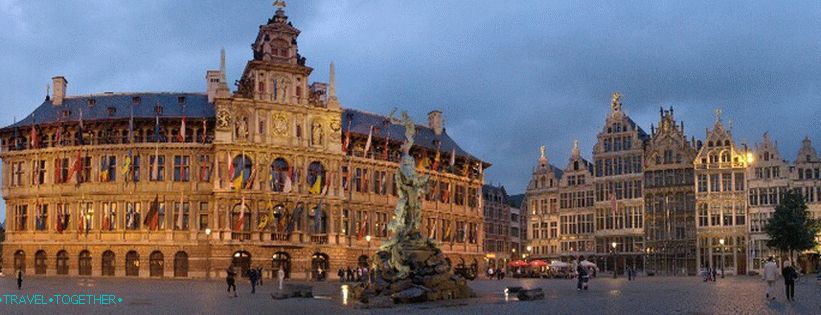 Grote Markt
Grote Markt
Grote Markt is the most beautiful square of Antwerp, which is the heart of the old city. Represents a gorgeous architectural ensemble consisting of the town hall of the 16th century (masterpiece Dutch Revival and one of the first renaissance buildings on Northern Europe), old merchant houses and richly decorated 19th century fountain depicting Sylvia Brabo – hero, the victorious giant Antiguna. Originally Grote Markt was area near the medieval residential quarter. In 1220 land under the square was donated to the city. This period is considered the beginning of the history of the Grote Markt.
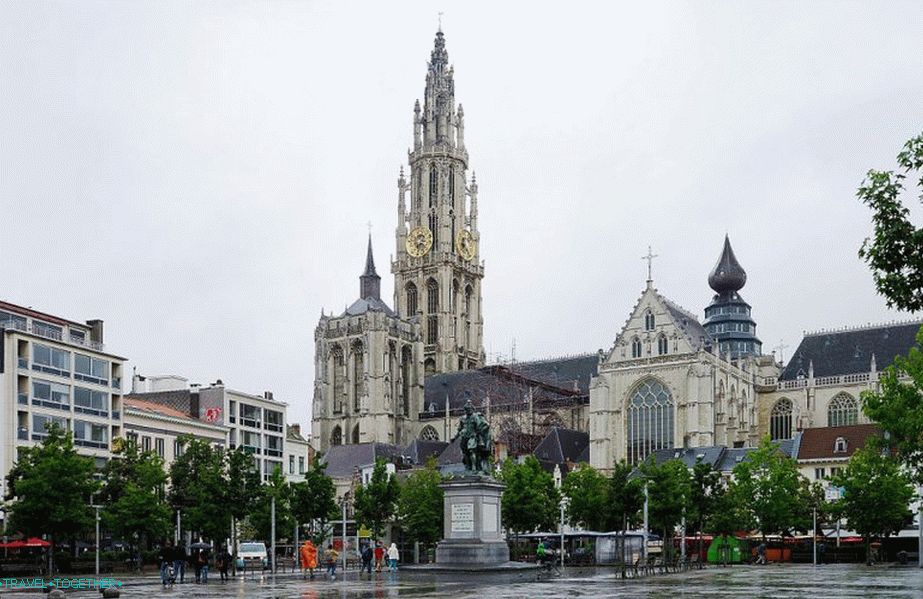 Cathedral Mother of God
Cathedral Mother of God
The Cathedral of Our Lady is a great masterpiece of medieval architecture and The largest gothic church in Belgium. The cathedral is architectural dominant of Antwerp due to the huge late gothic the bell tower (123 meters high), which was built in the first half of the 16th century. Work on the church began in 1352 and lasted until 1521. By the construction of the cathedral “put their hands” many famous masters of Western Europe.
Over the past centuries, the church has undergone several times severe destruction, depriving her of the most valuable works art. First there was a fire in 1533, then in 1566 the cathedral was ravaged by Protestants, in 1581 by Calvinists, and in In 1794 and 1800 the church was damaged by French troops. Restoration of the cathedral began in the 19th century and continued until 1983. of the year. The best of the remaining works of art are exhibited in nave and aisles.
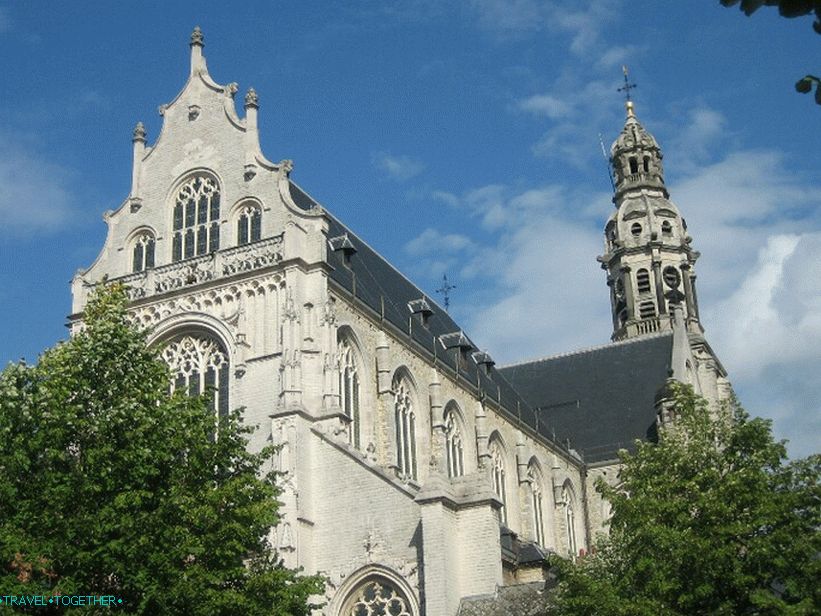 Holy Church Paul’s
Holy Church Paul’s
The Church of St. Paul is a beautiful late Gothic church, located on the historic square Veemarkt, which was once functioned as a former cattle market. The construction of this religious building began in 1517 and was completed in 1639. Baroque Clock Tower dates back to 1680. Unfortunately, the fire in 1968 strongly damaged the church. However, excellent preserved here paintings by Rubens and Van Dyck.
 Meat hall (Vleeshuis)
Meat hall (Vleeshuis)
The meat hall (Vleeshuis) is an impressive brick building, built in the first half of the 16th century in the late gothic style. Here, as the name implies, the butchers guild was located. Now in the walls of this historic building is a museum applied art and archeology.
A popular tourist destination is the port of Antwerp. Only port facilities cover more than 10,000 hectares, confirming the status of the port of Antwerp as one of the largest in Europe and the world. In its surroundings you can look at the old docks, stocks, windmill of the 17th century.
 Holy Church Jacob
Holy Church Jacob
The Church of St. James is a former cathedral church and one of main sacred monuments of Antwerp. Building this religious building began in 1431 and lasted until 17 century. The church has a magnificent baroque interior and austere facade in the style of the Brabant gothic. In the eastern chapel is located the tomb of Rubens.
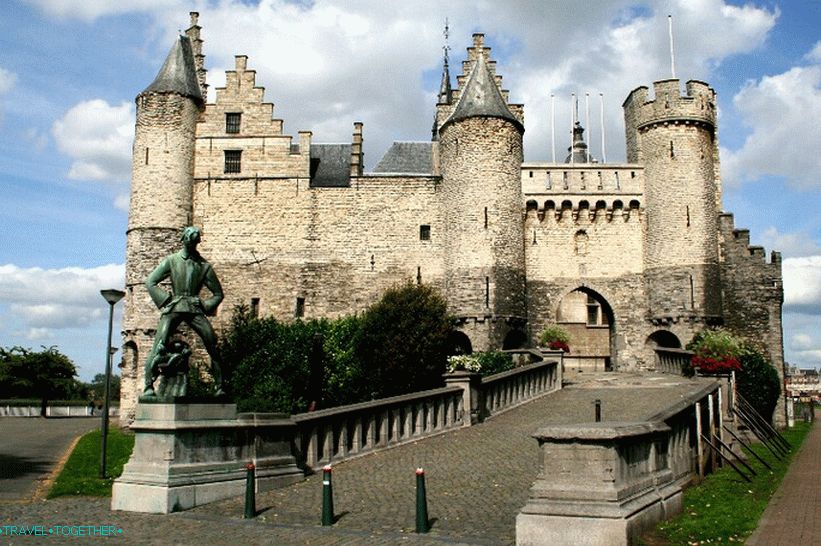 Steen Castle
Steen Castle
Steen Castle – the oldest building in Antwerp, founded in 11 century. The modern look of the Steen found between the 12th and 13th centuries, when built a stone wall and a few gates. Until 1823 The castle was used as a prison.
 Church of sv. Charles Borromeo
Church of sv. Charles Borromeo
Church of sv. Charles Borromeo – a beautiful baroque church, built by the Jesuits between 1615 and 1621. The building has magnificent facade and interior, including paintings by Rubens, as well as numerous sculptures and elaborate wooden carvings. A unique feature of this church is the original and still pore functioning mechanism above the main altar used to switch pictures.
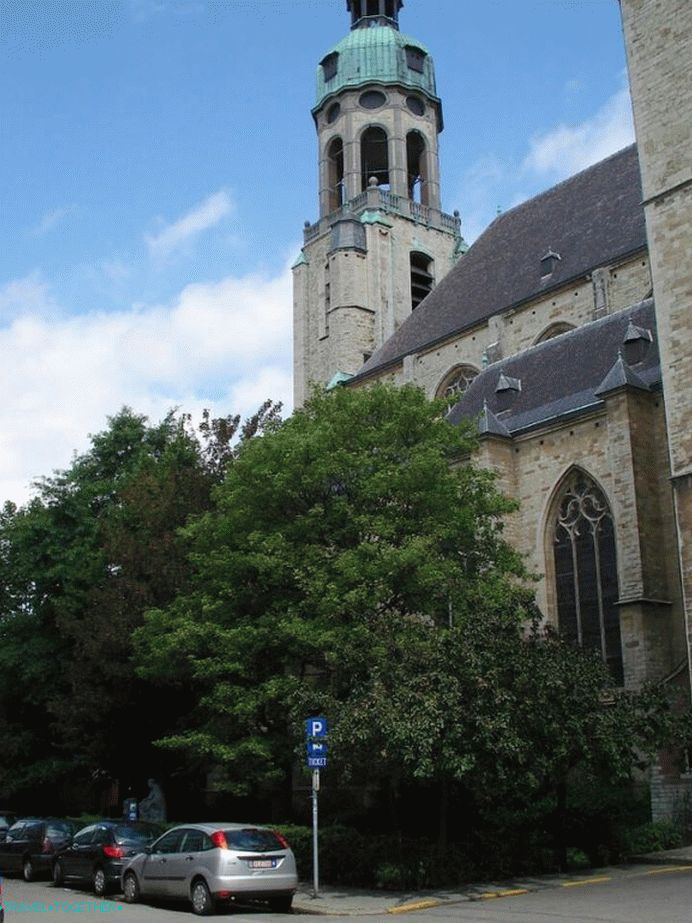 Church of sv. Andrew
Church of sv. Andrew
Church of sv. Andrew – Augustinian church built at the beginning 16th century. Inside you can see stunning baroque altars and works of art of the 17th century. The church has architecture in late gothic style, with the exception of the upper tiers and spiers, which are characteristic of the late baroque era.
 “Handelsbeurs” (Новая биржа)
“Handelsbeurs” (Новая биржа)
“Handelsbeurs” (New Exchange) – a historic public building, built in 1531. After the last fire the exchange was rebuilt in a rather luxurious neo-gothic style.
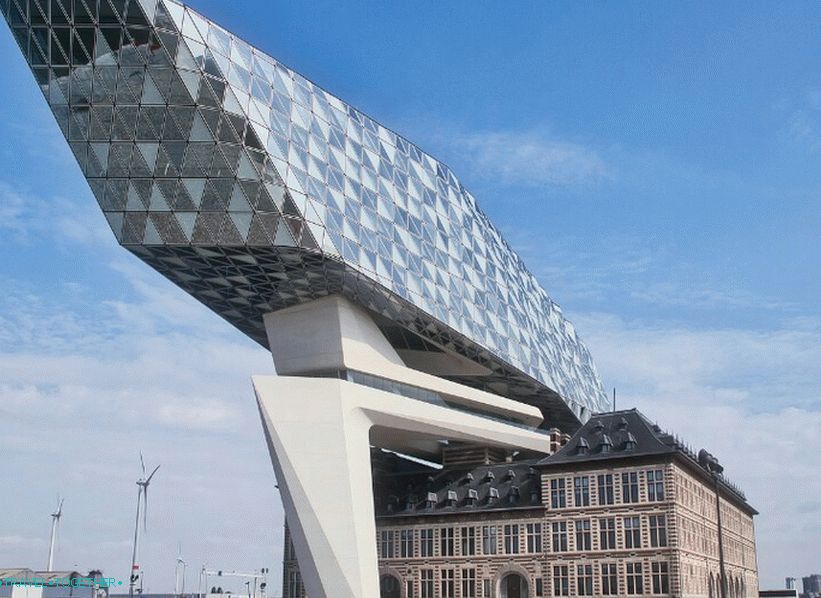 Headquarters port of antwerp
Headquarters port of antwerp
The headquarters of the port of Antwerp – modern architectural the pearl that represents the old building of the former fire department station with a superstructure of glass and steel in the shape of a diamond.
Interesting museums of Antwerp
 MAS Museum
MAS Museum
Antwerp is famous for its magnificent museums. Here are the most interesting of them:
- Museum of Applied Art and Archeology at Vleeshuis – collections of prehistoric, Egyptian, Roman and Merovingian artifacts (weapons and armor, ceramics, antique furniture, sculptures and woodwork, old coins).
- The Plantin Moretus Museum displays the history of printing and the atmosphere of the house of an old Flemish merchant. The museum is located in beautiful historic building which is considered a masterpiece architecture of the Flemish Renaissance.
- The Diamond Museum – various aspects of diamond trading, including their extraction, processing and industrial use. Also The museum has a collection of processed and rough diamonds.
- Rubens House – a museum dedicated to the famous artist. The interior of the house is designed in the style of that period and contains many his pictures.
- The Royal Museum of Fine Arts – more than 1000 works old masters, mainly from the Flemish and Dutch schools, and also more than 1,500 pieces of modern art.
- The MAS Museum is a cultural object in the area of the old docks with phenomenally large marine history collection cities. Today the collections of this museum number about 500,000 items including artwork and the dishes.
Video
Maps and guides
City map






